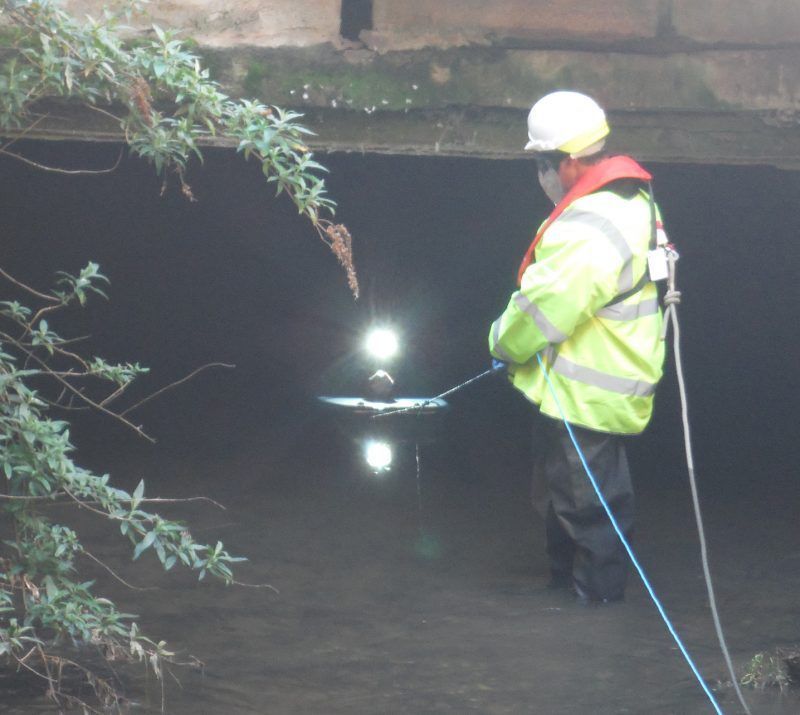Let’s go surfing – in a 400-year-old culvert

 Drainage engineers found a novel solution when a client needed to establish the condition of a centuries-old culvert – they went surfing.
Drainage engineers found a novel solution when a client needed to establish the condition of a centuries-old culvert – they went surfing.
The team from the Lanes depot in Plymouth mounted a CCTV drainage survey camera on a surfboard and floated it through the culvert under an Elizabethan building.
Usually, they would have used one of Lanes Group’s purpose-designed camera floats, which are designed to hold the drainage camera during pipe float-through surveys.
However, in this case, all the float-through devices were being used, and the client needed the survey results by a set time – so some clever improvisation allowed the job to be completed.
Lanes Plymouth Area Development Manager Grant Cooper said: “Since Devon and the South West is home of British surfing it seemed apt that we should use a surf board to carry out the float-through survey.
“Of course, the water conditions in the culvert were not as exciting as a surfer would like, but they were perfect for us. Water flows in the culvert were slow, so the surf board remained perfectly stable throughout.
“This resulted in us getting good HD-quality video images of the interior of the culvert, which we needed to complete our drainage survey report.”
Float-through CCTV drainage camera surveys are needed when it is not possible to divert water running through a pipe, using a system of overpumping, or it is not convenient to wait until the pipe is dry.
 In this case, the culvert ran under an Elizabethan building and then under an adjacent yard in the centre of Exeter, before emerging above ground and discharging into the River Exe.
In this case, the culvert ran under an Elizabethan building and then under an adjacent yard in the centre of Exeter, before emerging above ground and discharging into the River Exe.
It is believed the culvert had been created more than 400 years ago to power water wheels used by Tudor artisans.
Consulting civil and structural engineers Simon Bastone Associates commissioned Lanes Group to carry out the float-through survey to assess the strength of the culvert as part of a planning process for new homes.
The plan is to demolish a disused Victorian factory under which the culvert runs, to make way for the new development.
Grant Cooper said: “As with all float-through surveys, health and safety was paramount. A full risk assessment and method statement was drawn up to establish how the survey should be carried out.
“Two drainage engineers put on waterproof dry suits and harnesses, attached to safety lines, before entering the water. They were supervised by colleagues on the bank at all times.
“The surfboard, with the CCTV drainage survey camera firmly attached to it, was floated down the channel and intercepted by the second drainage engineer. It was then held and guided up and down the culvert we needed using ropes.
“Using a surfboard in this way is not conventional, and we would rather use a purpose-designed float-through device. But a spot of surfing did the trick, and I think it shows Lanes people always think laterally to help customers.”







